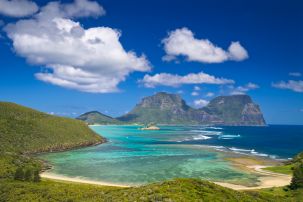Lord Howe Island is approximately 600km east of Port Macquarie in NSW. It is a World Heritage site with high biodiversity, including seabird nesting sites, flightless birds such as the Lord Howe Woodhen, and the world’s rarest insect, the Lord Howe Island Phasmid. Approximately 75% of Lord Howe Island’s original natural vegetation remains intact and undisturbed. Likewise, its beaches, coral reef and marine environment are pristine. These conditions make Lord Howe Island an excellent place to observe evolution, in particular: natural selection, speciation, and the impact of introduced species on native flora and fauna.
Because of its isolation and size, Lord Howe Island makes for an interesting study site into adaptation and evolution as there is little interference from external forces. However, the size and remoteness of Lord Howe Island have also made it vulnerable to the few external forces that have made it to the Island. These include rats and mice who have caused considerable damage to the ecology of the Island. However, eradication programs have seen both these species removed from the Island. These programs are a demonstration of the work that can be done to preserve and conserve precious habitats and the value of engaging local communities in these programs to ensure success.
In the lessons in this unit, students will explore the geographical and ecological features of Lord Howe Island, the work involved in eradicating invasive species, and the unique evolution and speciation that has occurred amongst the island's flora and fauna.

Welcome back!
Don't have an account yet?
Log in with:
By signing up to Cool.org you consent and agree to Cool's privacy policy to
store, manage and process your personal information. To read more, please see
our privacy policy here(Opens in new tab).
Create your free Cool.org account.
Many of our resources are free, with an option to upgrade to Cool+ for premium content.
Already have an account?
Sign up with:
By signing up to Cool.org you consent and agree to Cool's privacy policy to
store, manage and process your personal information. To read more, please see
our privacy policy here(Opens in new tab).